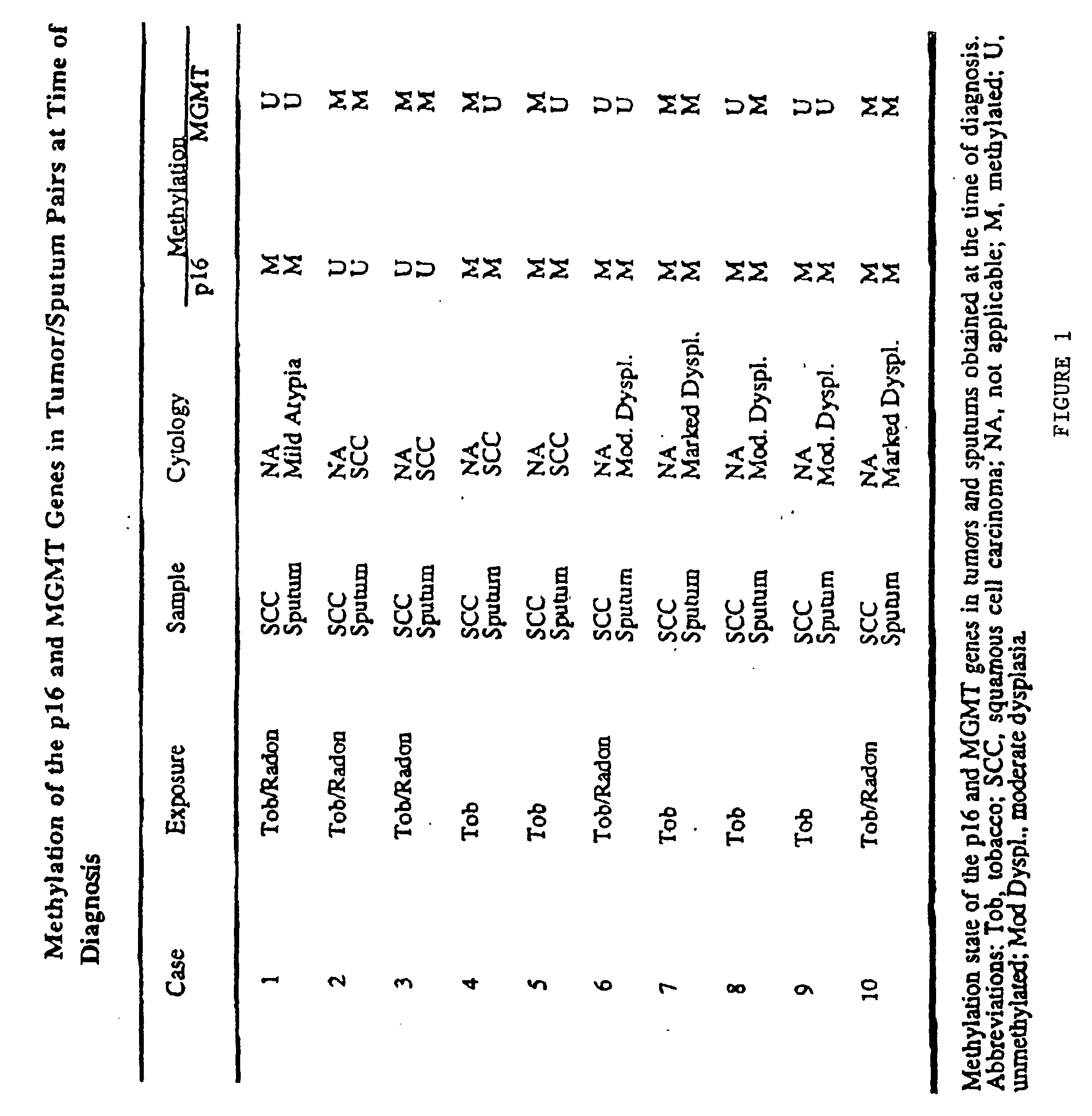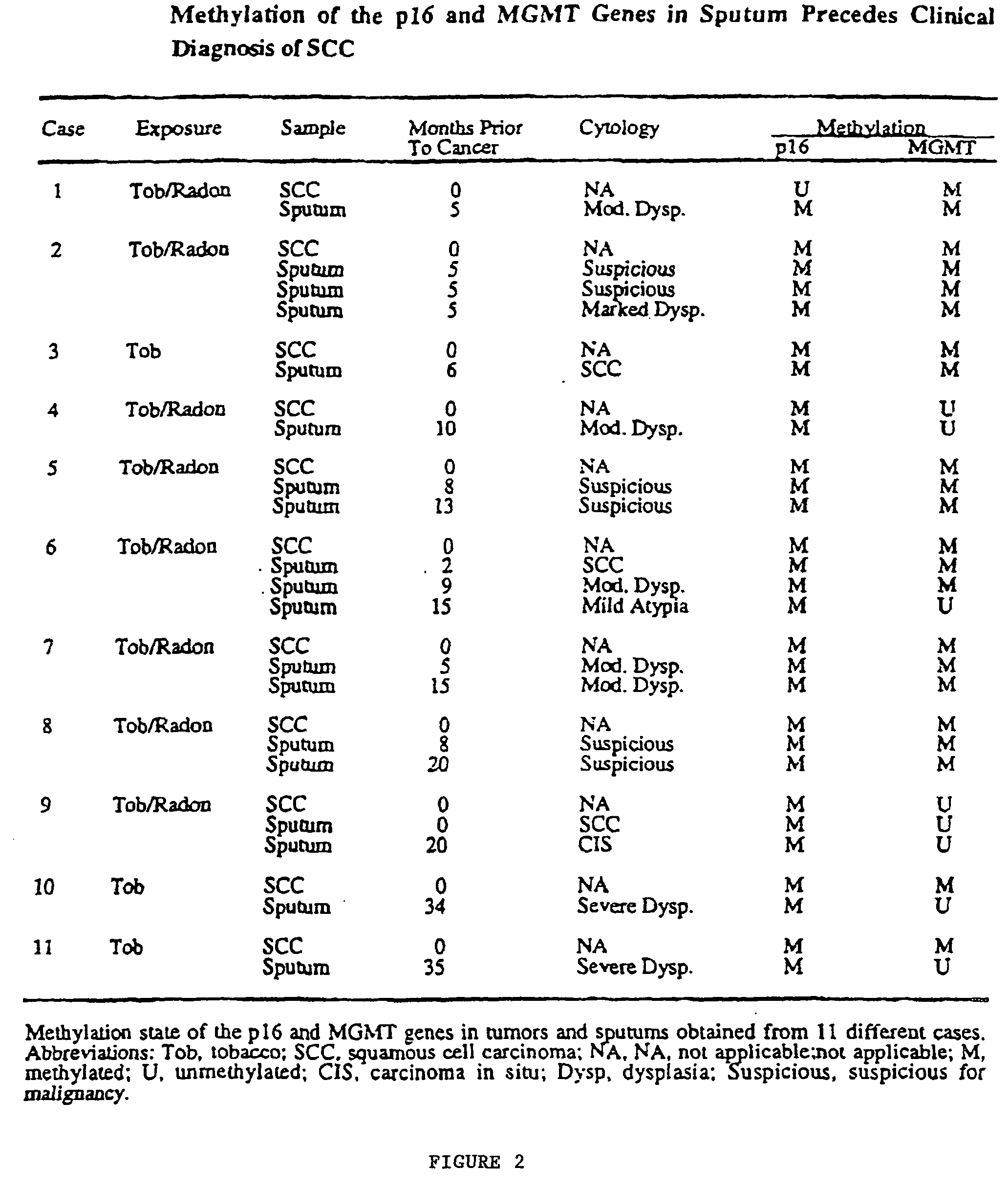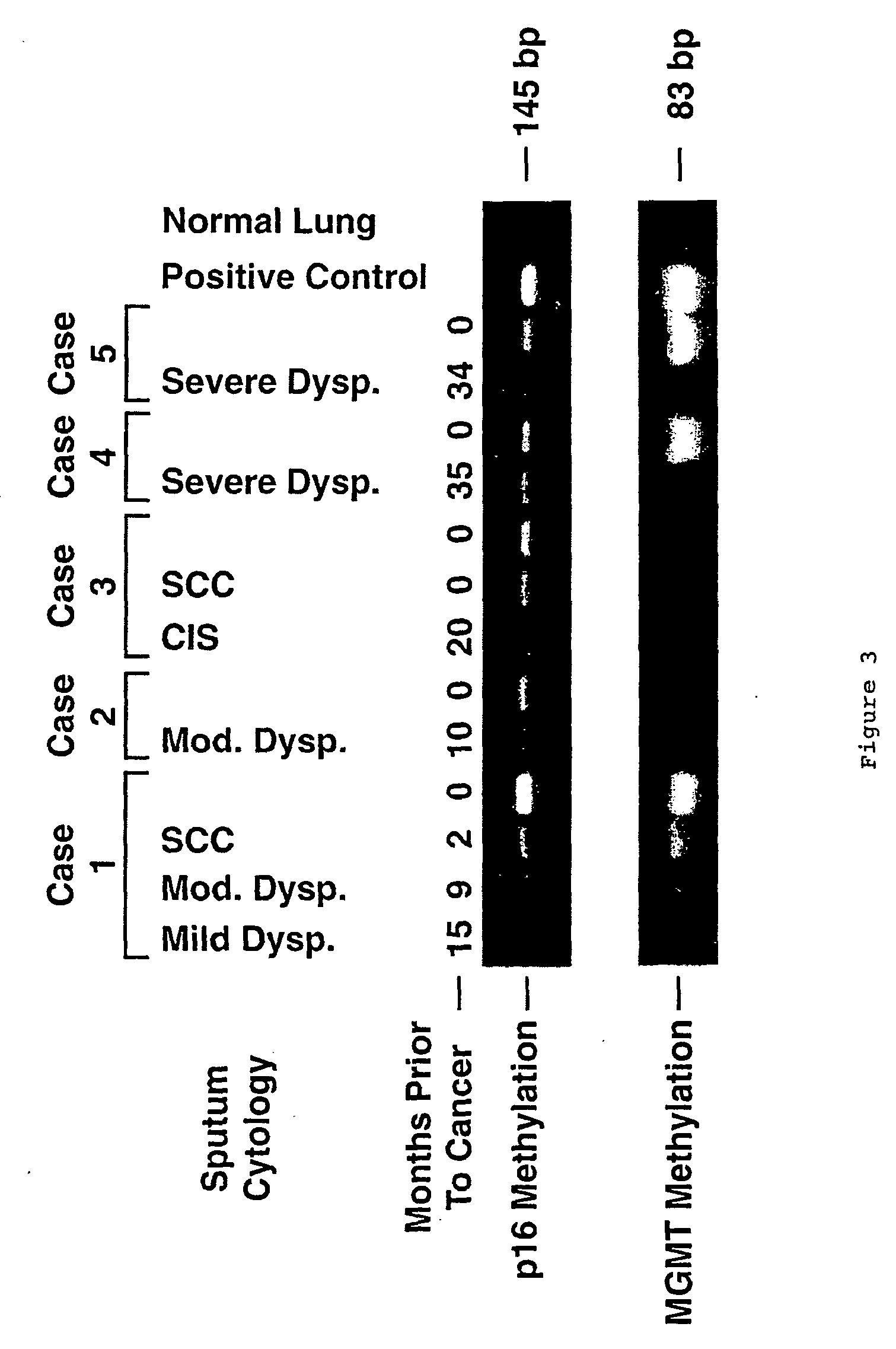Nested methylation-specific polymerase chain reaction cancer detection method
a methylation-specific polymerase chain reaction and cancer detection technology, applied in biochemistry, fermentation, organic chemistry, etc., can solve the problems of high mortality from this disease, rare cures, and disease remission
- Summary
- Abstract
- Description
- Claims
- Application Information
AI Technical Summary
Problems solved by technology
Method used
Image
Examples
example one
[0037] Sputum samples and matched SCCs were obtained from 21 people previously enrolled in a Lung Cancer Surveillance Study conducted through St Mary's Hospital, Grand Junction, Colo. The SCCs were obtained through biopsy or surgical resection. Sputum was collected by standardized procedures at Johns Hopkins Medical Institutions. Sputum was collected from 32 patients being evaluated for possible lung cancer through referral from their primary care physician, and from 91 cancer-free, former uranium miners from Grants, N. Mex., participating in a cancer surveillance study. The study was approved by the respective Institutional Review Boards; all participants gave written informed consent.
[0038] Sputum was considered unsatisfactory for evaluation if alveolar lung macrophages were absent or if a marked inflammatory component was present that diluted the concentration of pulmonary epithelial cells.
[0039] SCC tumors were obtained as frozen or formalin-fixed specimens. Frozen tumors were n...
example two
[0055] Cases (n=52) and controls (n=89) were recruited from veterans who use the New Mexico Veterans Health Care System (NMVHCS) for their primary care. Current or former cigarette smokers (>100 cigarettes smoked during their lifetime) were eligible for the test. In addition, subjects could not have had prior diagnosis of cancer of the aerodigestive tract, have undergone chemotherapy or radiotherapy to the chest within the last year, or be unable to tolerate all procedures required to obtain tissue samples, as further described below.
[0056] Cases were recruited from patients referred to the Multispecialty Chest Clinic at NMVHCS, where >90% of the NMVHCS lung cancer cases are evaluated for diagnosis and treatment recommendations. Patients are referred to this clinic because of signs or symptoms suggestive of lung cancer. All patients referred for diagnostic evaluation for lung cancer were recruited for participation in the test. Only those patients with histologic confirmation of lun...
PUM
| Property | Measurement | Unit |
|---|---|---|
| Acidity | aaaaa | aaaaa |
| Sensitivity | aaaaa | aaaaa |
Abstract
Description
Claims
Application Information
 Login to View More
Login to View More - R&D
- Intellectual Property
- Life Sciences
- Materials
- Tech Scout
- Unparalleled Data Quality
- Higher Quality Content
- 60% Fewer Hallucinations
Browse by: Latest US Patents, China's latest patents, Technical Efficacy Thesaurus, Application Domain, Technology Topic, Popular Technical Reports.
© 2025 PatSnap. All rights reserved.Legal|Privacy policy|Modern Slavery Act Transparency Statement|Sitemap|About US| Contact US: help@patsnap.com



